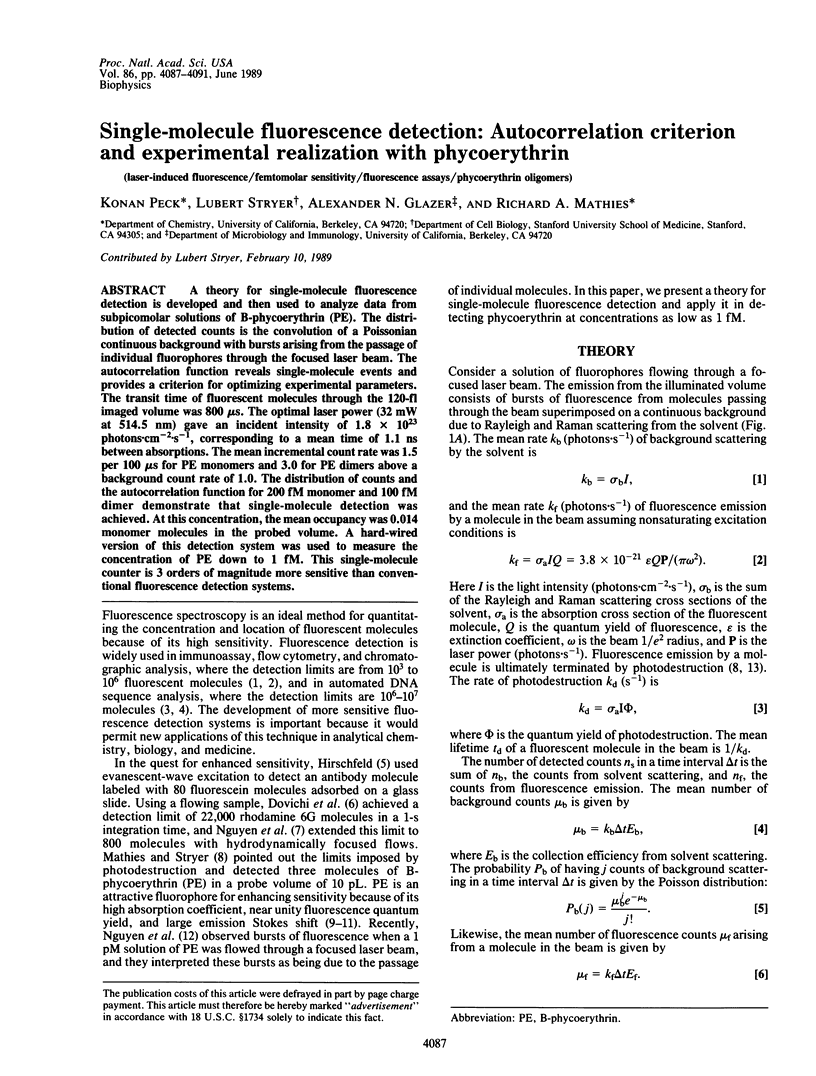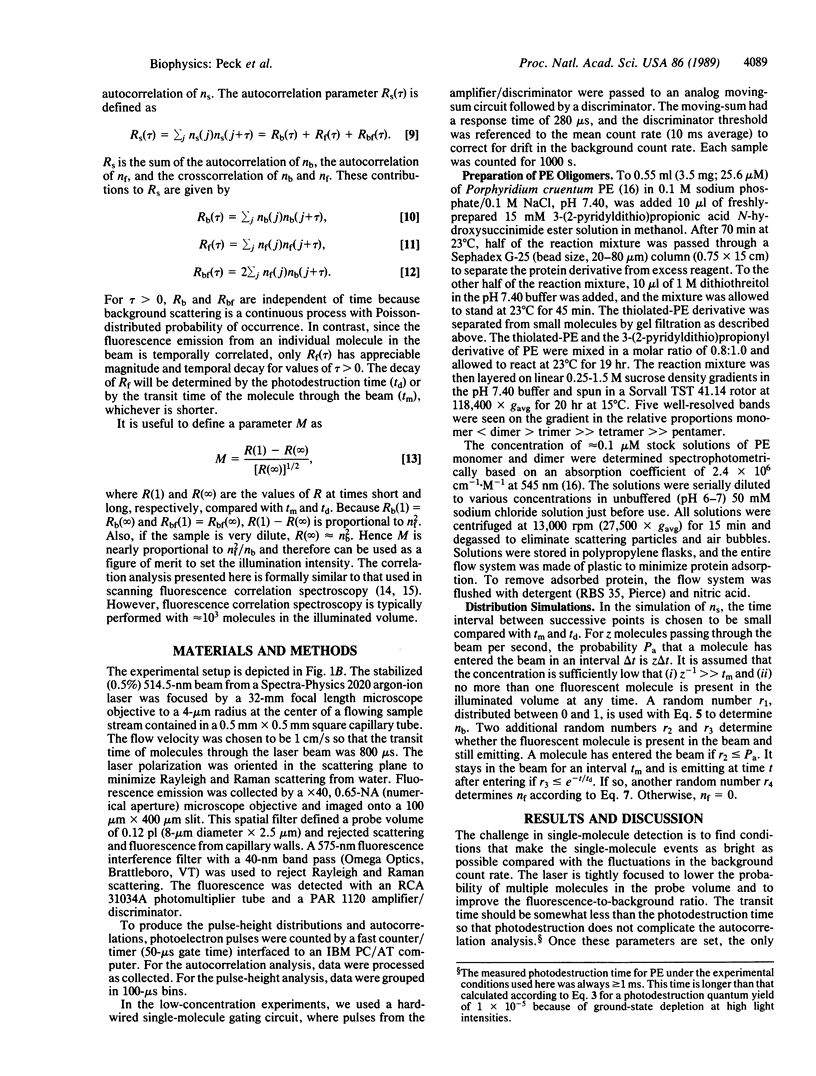Abstract
A theory for single-molecule fluorescence detection is developed and then used to analyze data from subpicomolar solutions of B-phycoerythrin (PE). The distribution of detected counts is the convolution of a Poissonian continuous background with bursts arising from the passage of individual fluorophores through the focused laser beam. The autocorrelation function reveals single-molecule events and provides a criterion for optimizing experimental parameters. The transit time of fluorescent molecules through the 120-fl imaged volume was 800 microseconds. The optimal laser power (32 mW at 514.5 nm) gave an incident intensity of 1.8 x 10(23) photons.cm-2.s-1, corresponding to a mean time of 1.1 ns between absorptions. The mean incremental count rate was 1.5 per 100 microseconds for PE monomers and 3.0 for PE dimers above a background count rate of 1.0. The distribution of counts and the autocorrelation function for 200 fM monomer and 100 fM dimer demonstrate that single-molecule detection was achieved. At this concentration, the mean occupancy was 0.014 monomer molecules in the probed volume. A hard-wired version of this detection system was used to measure the concentration of PE down to 1 fM. This single-molecule counter is 3 orders of magnitude more sensitive than conventional fluorescence detection systems.
Full text
PDF




Selected References
These references are in PubMed. This may not be the complete list of references from this article.
- Ansorge W., Rosenthal A., Sproat B., Schwager C., Stegemann J., Voss H. Non-radioactive automated sequencing of oligonucleotides by chemical degradation. Nucleic Acids Res. 1988 Mar 25;16(5):2203–2206. doi: 10.1093/nar/16.5.2203. [DOI] [PMC free article] [PubMed] [Google Scholar]
- Cheng Y. F., Dovichi N. J. Subattomole amino acid analysis by capillary zone electrophoresis and laser-induced fluorescence. Science. 1988 Oct 28;242(4878):562–564. doi: 10.1126/science.3140381. [DOI] [PubMed] [Google Scholar]
- Dovichi N. J., Martin J. C., Jett J. H., Trkula M., Keller R. A. Laser-induced fluorescence of flowing samples as an approach to single-molecule detection in liquids. Anal Chem. 1984 Mar;56(3):348–354. doi: 10.1021/ac00267a010. [DOI] [PubMed] [Google Scholar]
- Glazer A. N., Hixson C. S. Subunit structure and chromophore composition of rhodophytan phycoerythrins. Porphyridium cruentum B-phycoerythrin and b-phycoerythrin. J Biol Chem. 1977 Jan 10;252(1):32–42. [PubMed] [Google Scholar]
- Kronick M. N. The use of phycobiliproteins as fluorescent labels in immunoassay. J Immunol Methods. 1986 Aug 21;92(1):1–13. doi: 10.1016/0022-1759(86)90496-5. [DOI] [PubMed] [Google Scholar]
- Meyer T., Schindler H. Particle counting by fluorescence correlation spectroscopy. Simultaneous measurement of aggregation and diffusion of molecules in solutions and in membranes. Biophys J. 1988 Dec;54(6):983–993. doi: 10.1016/S0006-3495(88)83036-4. [DOI] [PMC free article] [PubMed] [Google Scholar]
- Oi V. T., Glazer A. N., Stryer L. Fluorescent phycobiliprotein conjugates for analyses of cells and molecules. J Cell Biol. 1982 Jun;93(3):981–986. doi: 10.1083/jcb.93.3.981. [DOI] [PMC free article] [PubMed] [Google Scholar]
- Petersen N. O. Scanning fluorescence correlation spectroscopy. I. Theory and simulation of aggregation measurements. Biophys J. 1986 Apr;49(4):809–815. doi: 10.1016/S0006-3495(86)83709-2. [DOI] [PMC free article] [PubMed] [Google Scholar]
- Smith L. M., Sanders J. Z., Kaiser R. J., Hughes P., Dodd C., Connell C. R., Heiner C., Kent S. B., Hood L. E. Fluorescence detection in automated DNA sequence analysis. Nature. 1986 Jun 12;321(6071):674–679. doi: 10.1038/321674a0. [DOI] [PubMed] [Google Scholar]


